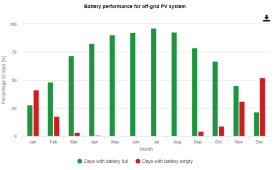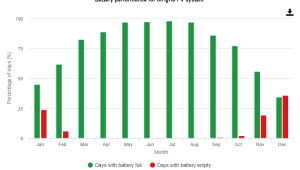I currently have 12 - 250W Canadian Solar panels that (at optimum which never happens) could produce 3kW / 448.8V / 8A in series.
Is this system big enough to support 2 - LiFePO4 48V 100Ah batteries, or would the 2nd be a waste of money? (I need to know before the Cyber Monday sales go away...=).
Thanks in advance!
Ron
Is this system big enough to support 2 - LiFePO4 48V 100Ah batteries, or would the 2nd be a waste of money? (I need to know before the Cyber Monday sales go away...=).
Thanks in advance!
Ron




